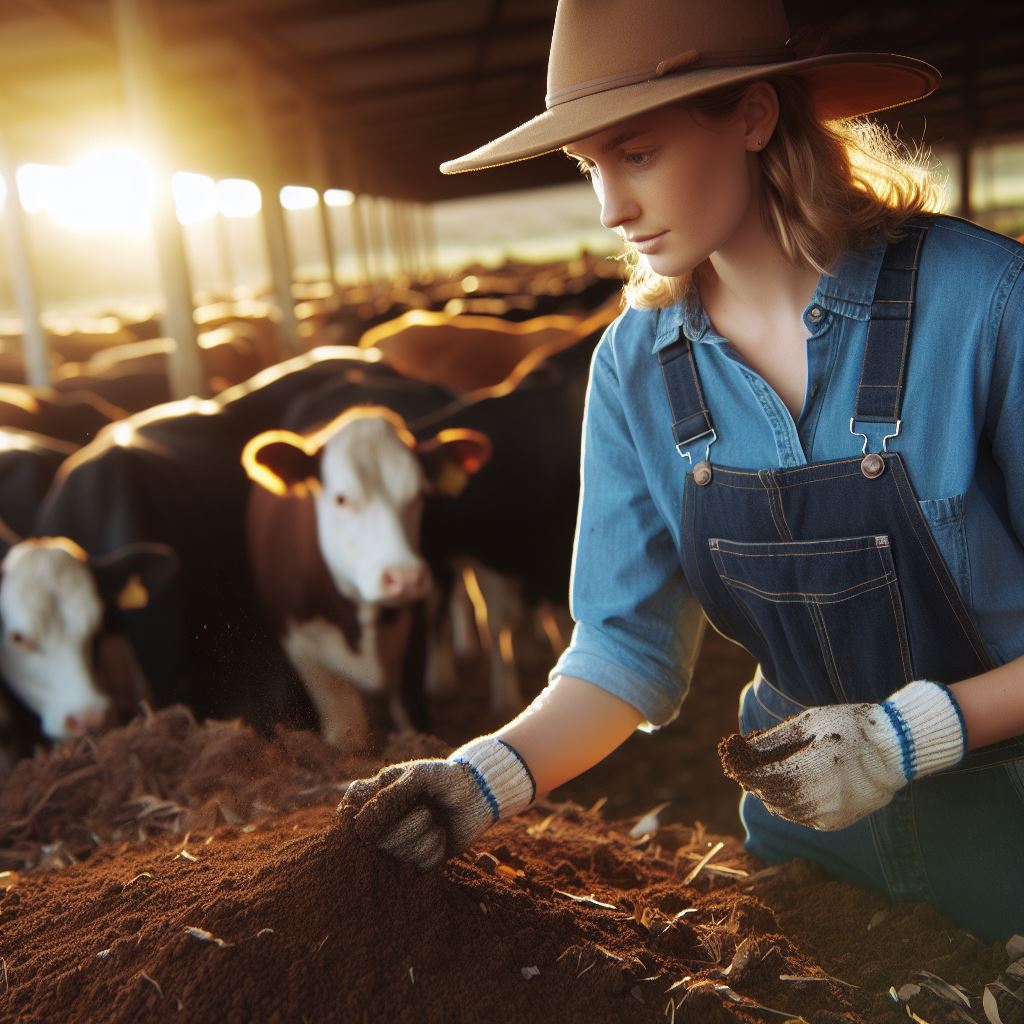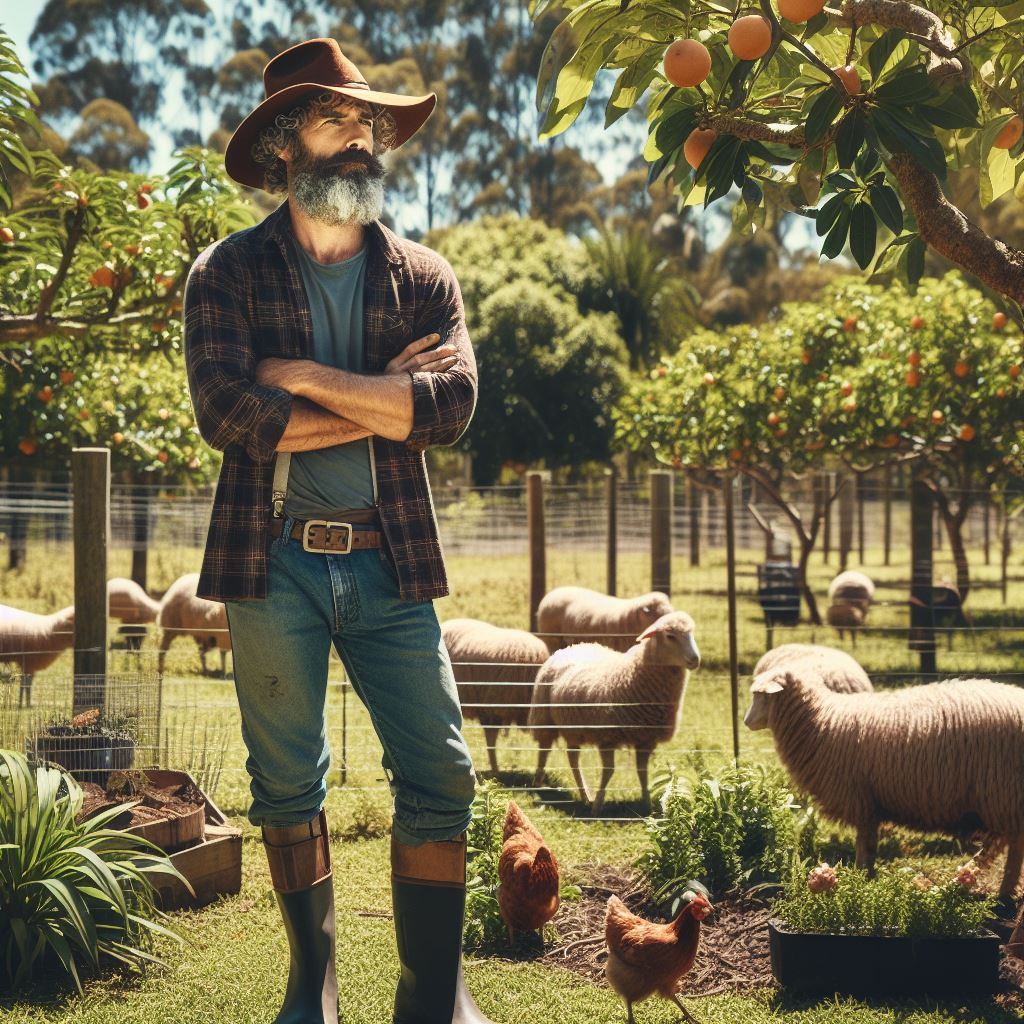Introduction
Cattle farming plays a crucial role in Australia, contributing significantly to the country’s economy and food supply.
This section provides a concise overview of Australian cattle farming methods and dispels common myths surrounding it.
Australia’s vast landscapes and climate favor cattle farming, making it an essential part of the agricultural industry.
With over 27 million cattle, Australia is one of the world’s largest beef exporters.
Despite its economic significance, cattle farming often faces criticism and misconceptions.
One common myth is that Australian cattle farming is detrimental to the environment.
However, farmers employ sustainable practices such as rotational grazing and land management to minimize environmental impact.
Another myth suggests that cattle farming is inhumane due to the use of feedlots.
In reality, feedlots provide a controlled environment for cattle, ensuring their welfare and preventing overgrazing.
The section will also discuss the methods employed in Australian cattle farming, such as extensive grazing in natural grasslands and intensive systems with supplementary feeding.
Both approaches have their advantages depending on factors like land availability and market demand.
Furthermore, the section aims to debunk the misconception that Australian cattle farming uses excessive hormones and antibiotics.
Strict regulations and quality control measures ensure that beef produced in Australia is safe and of high quality.
Generally, this section will delve into the importance of cattle farming in Australia, dispel myths, and provide insights into the methods used in the industry.
It aims to provide a comprehensive understanding of Australian cattle farming and highlight its significance in the country’s agricultural landscape.
Methods of Australian Cattle Farming
Traditional Methods
- Grazing on open pasture provides cattle with natural forage and exercise.
- Stocking rates and rotation are carefully managed to prevent overgrazing and land degradation.
- Natural breeding is favored, allowing cattle to reproduce without human intervention.
- Minimal intervention means relying on natural processes rather than technology or artificial methods.
Modern Methods
- Intensive feedlots are used to maximize cattle growth in a controlled environment.
- Artificial insemination allows the use of genetically superior bulls without the need for physical contact.
- High-tech monitoring and management systems track cattle health, behavior, and performance.
- Genetic selection focuses on breeding animals with desired traits to improve overall herd quality.
Balancing Tradition and Technology: The Evolution of Cattle Farming in Australia
Cattle farming in Australia incorporates a mix of traditional methods that have been practiced for generations and modern techniques that take advantage of advancements in technology and science.
One of the traditional methods is grazing on open pasture.
Cattle are allowed to roam and graze freely, consuming natural grasses and plants.
This method provides the cattle with exercise and a varied diet.
To prevent overgrazing and land degradation, stocking rates and rotation are carefully managed.
Ranchers monitor the number of cattle allowed on a particular area of land to ensure it can regenerate and support healthy growth.
Regularly rotating the grazing areas also helps maintain the health of the pasture.
Natural breeding is commonly practiced in traditional cattle farming.
Ranchers allow bulls and cows to mate naturally, without the intervention of artificial insemination.
This preserves the natural genetic diversity of the herd.
Traditional methods also involve minimal intervention.
Ranchers rely on natural processes rather than technological solutions.
They allow the cattle to naturally develop and grow, without the use of growth hormones or other artificial substances.
In recent years, modern methods have gained popularity in Australian cattle farming.
Modern Innovations Transforming Australian Cattle Farming
Intensive feedlots are used to maximize cattle growth.
Cattle are confined to a controlled environment and fed a carefully balanced diet to promote rapid weight gain.
Artificial insemination is another modern method used in Australian cattle farming.
It allows ranchers to breed cattle using genetically superior bulls without the need for physical contact.
This enables greater control over the herd’s genetics and improves the overall quality of the offspring.
High-tech monitoring and management systems have revolutionized the way cattle farming is carried out.
Sensors and cameras track cattle health, behavior, and performance in real-time.
This data helps ranchers make informed decisions about feeding, mating, and health management.
Genetic selection has also become a significant aspect of modern Australian cattle farming.
Ranchers focus on breeding animals with desired traits, such as high milk production or fast growth rates.
By selecting animals with superior genetics, the overall quality of the herd can be continuously improved.
Basically, Australian cattle farming combines traditional methods with modern techniques to ensure efficient, sustainable, and high-quality livestock production.
Ranchers employ grazing on open pasture, natural breeding, and minimal intervention along with intensive feedlots, artificial insemination, high-tech monitoring, and genetic selection.
Each method has its own benefits and challenges, and farmers choose approaches that suit their specific goals and circumstances.
Read: Tech Advances in Enviro Management: AU Focus
Benefits of Australian Cattle Farming Methods
Traditional Methods
- Sustainability and environmental preservation
- Maintenance of ancestral practices
- Lower operating costs
Modern Methods
- Increased production and efficiency
- Control over breeding and genetic traits
- Enhanced animal health and welfare
Cattle farming in Australia has been a traditional and essential aspect of the country’s agriculture for centuries.
The methods used by Australian cattle farmers, both traditional and modern, offer numerous benefits.
These practices not only ensure the sustainability of the environment but also provide economic advantages for the farmers.
Traditional Methods
- Sustainability and environmental preservation: Australian cattle farmers employ sustainable practices to preserve the environment. They apply rotational grazing, which allows the land to recover and prevents soil erosion.
- Maintenance of ancestral practices: Traditional methods in cattle farming have been passed down through generations. Australian farmers continue to honor their ancestors by maintaining these proven techniques.
- Lower operating costs: Traditional methods often require fewer resources and technology, resulting in lower operating costs for farmers. This allows them to maintain profitability while preserving their cultural heritage.
Advancements in Australian Cattle Farming: Boosting Production, Genetic Excellence, and Animal Welfare
Increased production and efficiency
Modern cattle farming methods in Australia have significantly increased production and efficiency. Advanced technologies and equipment have streamlined processes, leading to higher yields.
Control over breeding and genetic traits
Australian cattle farmers use modern methods to selectively breed their livestock, ensuring desirable traits. This control over the breeding process helps maintain superior genetics and improve the overall quality of the cattle.
Enhanced animal health and welfare
Modern techniques in cattle farming prioritize the well-being of the animals. Farmers provide proper nutrition, vaccinations, and veterinary care to ensure the health and welfare of their cattle.
A Balanced Approach: Harnessing Traditional Wisdom and Modern Techniques in Australian Cattle Farming
In fact, Australian cattle farming methods, both traditional and modern, offer significant benefits to farmers and the environment.
Traditional practices maintain sustainability, ancestral knowledge, and lower operating costs.
On the other hand, modern methods provide increased production, controlled breeding, and improved animal welfare.
Australian cattle farmers employ a combination of these methods, utilizing the best of both worlds to ensure a thriving industry for generations to come.
Read: Renewable Energy in AU Farms: Enviro Impact
Discover More: Fishermen’s Challenges: Australia’s Climate
Debunking Common Myths
Traditional methods are outdated and inefficient
- Traditional methods are often rooted in years of experience and sound knowledge.
- They have been passed down through generations and adapted to suit changing times.
- These methods may seem old-fashioned but are still effective in many ways.
- Traditional methods often emphasize sustainable practices and preserving the environment.
- They prioritize animal welfare and ensure cattle are well-fed, healthy, and happy.
Modern methods harm animal welfare
- Modern cattle farming has evolved with advancements in technology and scientific research.
- It focuses on improving animal welfare by providing better housing, nutrition, and healthcare.
- Farmers now have access to advanced tools for monitoring and managing the health of their cattle.
- Modern methods reduce stress, prevent diseases, and enhance the overall well-being of the animals.
- Proper animal handling techniques and welfare certifications are integral parts of modern farming practices.
Australian cattle farming is solely responsible for deforestation
- Australian cattle farming is often blamed for deforestation due to the expansion of grazing lands.
- However, studies have shown that other factors like urbanization and agriculture contribute more significantly.
- The Australian government has implemented strict regulations to manage deforestation and protect natural habitats.
- Sustainable practices, such as rotational grazing and reforestation efforts, are adopted by responsible cattle farmers.
- Collaborative efforts between farmers, environmentalists, and government agencies aim to minimize deforestation.
To sum it up, it is important to separate fact from fiction when it comes to Australian cattle farming.
Traditional methods, though perceived as outdated, can still be efficient and environmentally friendly.
Modern methods prioritize animal welfare and employ advanced technologies to ensure the well-being of cattle.
Read: Soil Health: Top Priority for AU Enviro Experts

Challenges and Future Considerations
Environmental concerns
- Rising awareness of climate change and its impact on agriculture poses a significant challenge.
- Australian cattle farming must adopt sustainable practices to minimize its carbon footprint.
- Efforts should be made to reduce water usage and prevent soil degradation.
- Protecting biodiversity and maintaining ecosystems should also be prioritized.
Technological advancements
- Embracing modern technologies can enhance the efficiency and productivity of Australian cattle farming.
- Implementing precision farming techniques can optimize resource allocation and reduce waste.
- Utilizing automation and robotics can streamline various tasks and improve overall operations.
- Investment in research and development of innovative solutions should be encouraged.
Market demands and consumer preferences
- Australian cattle farming needs to adapt to evolving market demands and changing consumer preferences.
- Consumer preferences for organic, grass-fed, and ethically raised cattle present opportunities and challenges.
- Improved marketing strategies and communication are essential to meet consumer expectations.
- Diversifying product offerings and exploring niche markets can be advantageous.
Government regulations and support
- Government regulations play a crucial role in shaping the future of Australian cattle farming.
- Ensuring farm practices are environmentally sustainable and meet animal welfare standards is vital.
- Supporting farmers with subsidies, grants, and educational programs can help overcome financial difficulties.
- Promoting collaboration between government bodies, research institutions, and farmers is essential for progress.
Review, Australian cattle farming faces numerous challenges and future considerations. Environmental concerns, technological advancements, market demands, and government regulations all play significant roles in shaping the industry’s future.
By addressing these challenges and embracing innovative solutions, Australian cattle farming can thrive and meet the evolving needs of consumers while ensuring sustainability and environmental stewardship.
Read: Biodiversity: Enviro Manager’s Role in AU
Your Personalized Career Strategy
Unlock your potential with tailored career consulting. Get clear, actionable steps designed for your success. Start now!
Get StartedConclusion
Lastly, Australian cattle farming methods play a vital role in the country’s economy and food industry.
The diverse range of practices, including extensive and intensive systems, ensures a sustainable and efficient production process.
While traditional practices have been the backbone of Australian cattle breeding for centuries, it is essential to appreciate and preserve them.
These practices encapsulate the rich history and cultural heritage of the industry.
However, embracing modern advancements is equally important.
Technological innovations, such as genetic selection, improved feedlot management, and precision farming techniques, contribute to increased productivity and animal welfare.
By combining traditional wisdom with modern practices, Australian cattle farmers can achieve a balance between heritage and progress.
This approach ensures the long-term sustainability and success of the industry.
In the end, understanding and supporting Australian cattle farming methods is crucial for consumers.
By making informed choices and supporting sustainable practices, individuals can contribute to the overall well-being of the industry and enjoy high-quality Australian beef.




